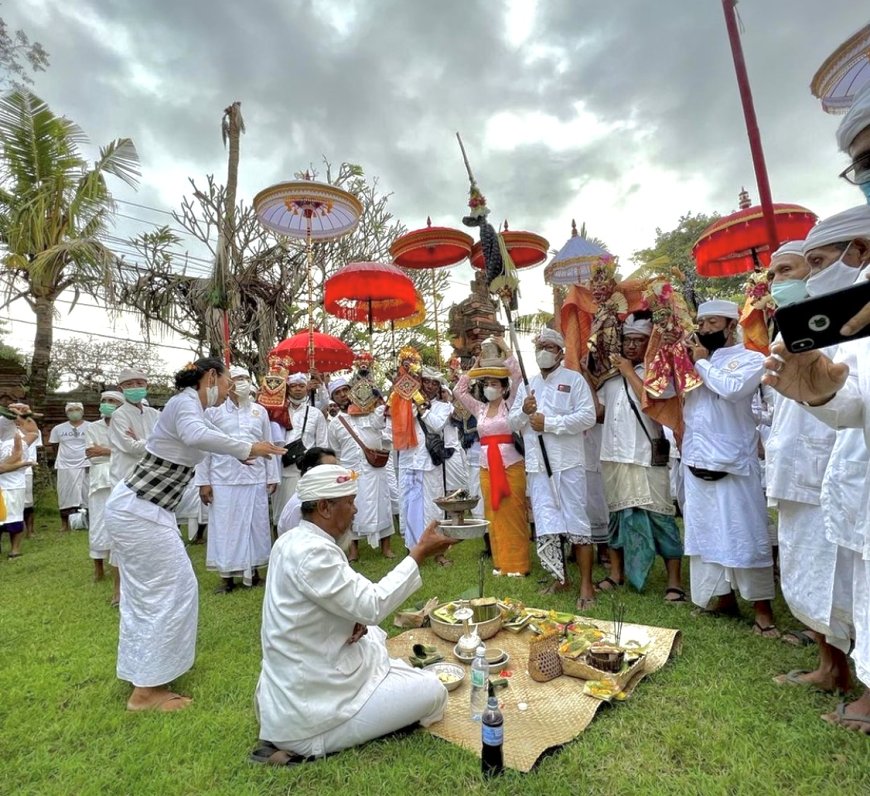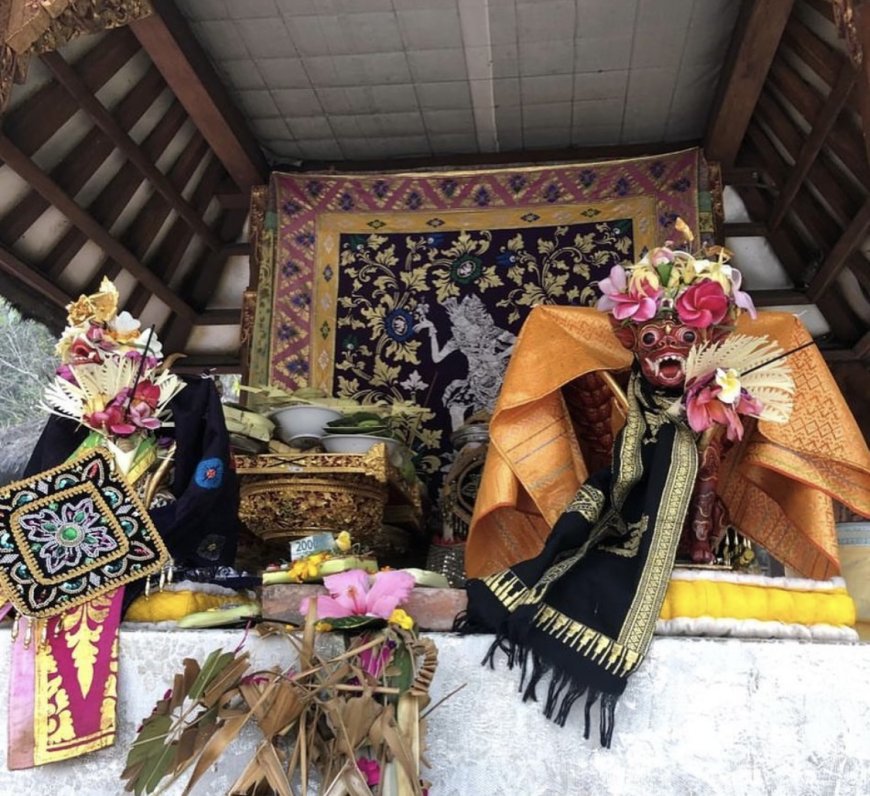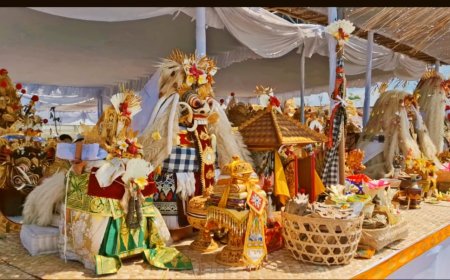Tilem Kajeng, a Tradition of Sanur Kaja Community during the Piodalan Ceremony at Pura Dalem Kedewatan Sanur
Tilem Kajeng is a tradition of the Sanur Kaja village community during the Piodalan ceremony at Pura Dalem Kedewatan Sanur as a form of gratitude and a religious offering ceremony to Ida Sang Hyang Widhi.

Tilem Kajeng is a sacred ceremony tradition performed by the community of Sanur Kaja Village, which, according to the Balinese calendar, falls on the day of "Tilem" or the dead moon in the Hindu religion. In the Balinese calendar, it is mentioned that when "Tilem" coincides with "Kajeng", people are not allowed to perform any rituals or sacred offerings. Therefore, the "Tilem Kajeng" piodalan is held three days later. This tradition only takes place in Sanur Kaja Village, specifically at the Pura Dalem Kedewatan Sanur.
Basically, every village in Bali has its own Pura Dalem. Pura Dalem is usually located next to a Hindu cemetery. Interestingly, Pura Dalem Kedewatan Sanur is not adjacent to a cemetery. Therefore, the "Tilem Kajeng" piodalan is only conducted at the Pura Dalem Kedewatan Sanur.
This piodalan ceremony takes place over 2 days, with the first day being the peak of the event and the second day being the "umanis piodalan" or what the community commonly calls "umanis Tilem Kajeng." The series of ceremonies begins with a ritual called "Melasti" on the first day. The entire Hindu community of Sanur Kaja gathers at Griya Jero Gede Sanur.
In its history, the founders of Sanur Village were ancestors who stopped at Griya Jero Gede Sanur. As a result, the ancestors and Ida Bhatara Sesuhunan of Sanur Village are placed at Griya Jero Gede Sanur. The "Tilem Kajeng" piodalan tradition is a form of purification and sanctification for these ancestors and Ida Bhatara Sesuhunan. Therefore, the community gathers at Griya Jero Gede Sanur.
After gathering, the community performs the first ritual accompanied by the Baris Tumbak dance. After this ritual, the community proceeds to Sanur Beach to perform the Melasti ceremony. The ancestors and Ida Bhatara are cleansed and re-offered at Sanur Beach before proceeding to Pura Dalem Kedewatan Sanur.

Tilem Kajeng at Sanur Kaja Village (Photo Source : Editorial Collection)
After completing the Melasti ceremony, the ancestors and Ida Bhatara proceed to Pura Dalem Kedewatan Sanur and are welcomed with sacred dances such as Rejang Dewa. Then, the ancestors and Ida Bhatara are placed in the inner sanctum of the temple, each in their respective shrine.
The community performs a collective prayer at Pura Dalem Kedewatan Sanur. This tradition is followed by the "Ngiterin Baliasa" ceremony, where the ancestors and Ida Bhatara who reside in Pura Dalem Kedewatan Sanur are invited to circumambulate the temple's inner sanctum three times. Thus, the culmination of the "Tilem Kanjeng" ceremony on the first day comes to an end.
On the second day, known as "umanis Tilem Kajeng," Banjar Pemucuk (the selected village group) carries out the "Mepeed" ceremony. This involves the community marching to Pura Dalem Kedewatan Sanur while carrying offerings made from the produce of the land.
The ceremony continues with sacred dance offerings such as the Tari Topeng and Tari Baris. Upon completion of the dance and other offering ceremonies, the community gathers for another collective prayer. At the end of the ceremony, the final ritual called "Medatengan" is performed, during which the participants may become possessed or experience spiritual connection. This signifies that the ancestral spirits and Ida Bhatara have descended to Earth before returning to their rightful place.

Ida Bhatara Sesuhunan (Photo Source : Editorial Collection)
The conclusion of this piodalan ceremony involves the ancestors and Ida Bhatara placed in the temple on the first day being taken back to Griya Jero Gede Sanur for the "Nyineb Piodalan" ritual, marking the end of the ceremony.
The "Tilem Kajeng" piodalan ceremony is held every six months. This tradition has been practiced for decades and continues to thrive with a strong cultural presence.





























































